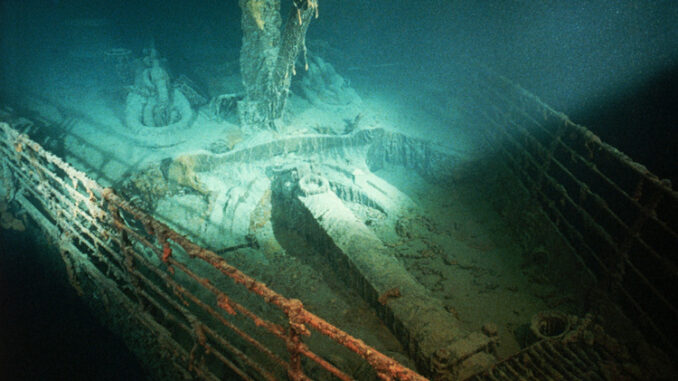
The wreck of the Titanic is one of the worst disasters at sea in history. It was the largest ocean liner ever made. It had state of the art watertight compartments with remotely-operated doors. It was an age where people believed in the power of technology. They thought the Titanic was unsinkable, but on its maiden voyage it struck an iceberg and sank within hours on April 15th, 1912. Why were they so wrong? How did the Titanic sink?
During its voyage across the Atlantic Ocean, the Titanic was warned more than once that icebergs were in the area. However, the ship kept going at full speed.
As soon as the Titanic hit the iceberg, the engineers in the lower decks knew the ship was going to sink. The Titanic could survive if up to four compartments were flooded. However, a massive tear had been ripped open in six of the ship’s watertight compartments. When the Titanic started to tilt down in the front, an order to get into the lifeboats was given.
The Titanic was able to hold over 60 lifeboats, but the ship was only carrying 20 lifeboats. Twenty lifeboats weren’t enough to get everyone to safety, but it was more than what was required by law. The crew only allowed women and children into the lifeboats first. That slowed boarding down, and many boats were sent out only half full.
People who were not able to get into a lifeboat would quickly freeze to death in the icy water. Eventually the Titanic tilted so much that the back of the ship was lifted into the air! Soon enough, it cracked in the middle and the ship split in half. The two pieces sank quickly, leaving only light debris where the massive ship used to be. The Titanic had 2,240 people on board, and only 706 survived. This April marks the 112th anniversary of the sinking of the Titanic. It still has an important part in our history.
What Do You Think? Why do we remember disasters in history? What can we learn from them?
Photo Credit: Ralph White/Corbis Documentary/Getty Images



